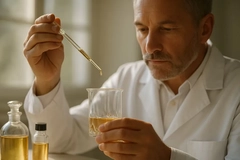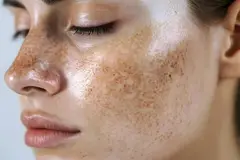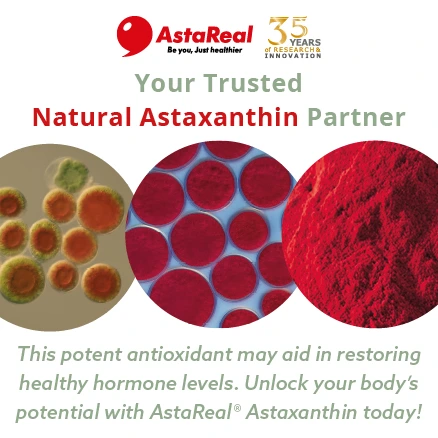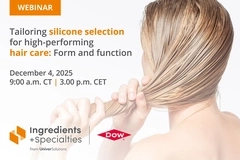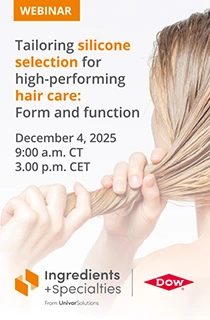Sequential testing finds link between skin microbiome and hyperpigmentation
Key takeaways
- Sequential’s early evidence finds a link between the skin microbiome and hyperpigmentation, as bacterial composition influences UV response.
- Certain bacteria species may protect against photoaging by reducing inflammation and oxidative stress.
- Formulation focus is shifting toward maintaining skin barrier health through balanced pH, mild surfactants, and microbiome-targeted actives.
Sequential has found a link between the skin microbiome and its role in hyperpigmentation. The company urges formulators to keep the skin barrier and pH balance in high focus for skin care, and prioritize bacterial strains that protect from photoaging and oxidative stress.
Personal Care Insights sits down with Petronille Houdart, skin care director at Sequantial, to discuss the skin microbiome’s role in hyperpigmentation and the potential for probiotics in skin care applications.
She explains that the skin microbiome is a community of microorganisms, including bacteria, fungi, and viruses, that live and grow on the skin. They play an essential role in multiple processes that maintain skin health, such as preventing the growth of pathogens and promoting tolerance.
“Its [the microbiome’s] role in hyperpigmentation is still at a very early stage. However, recent studies showed that the skin microbiome seems to influence how hyperpigmented spots form, and people with more hyperpigmentation often have slightly different bacterial communities than those with [a more even] skin tone,” says Houdart.
She exemplifies the growth of certain groups of bacteria, such as the colon bacterium, which has been found to positively correlate with the emergence of hyperpigmented spots. Additionally, Staphylococcus, Cutibacterium, and Lactobacillus species abundant on the skin might have some protective activities against photoaging and skin injury following UV exposure.
“Some bacteria can calm inflammation or produce protective molecules, while others may worsen oxidative stress or irritation, which triggers pigmentation. The research is still very early, but we are learning that the microbes living on our skin actively shape our skin, respond to injury, and UV light.”
 Houdart explains that common skin cell bacteria can help protect the skin from UV damage.Early stage in research
Houdart explains that common skin cell bacteria can help protect the skin from UV damage.Early stage in research
Houdart explains that common skin cell bacteria can help protect the skin from UV damage through metabolites with antioxidant effects.
“For example, some strains of Staphylococcus epidermidis produce a molecule called 6 HAP, which, in mouse studies, has been shown to inhibit tumor cell growth and use UV industrial development.”
This indicates that common bacterial cells can produce bioactive molecules that modify UV outcomes.
“Some beneficial bacteria and their metabolites can also reduce oxidative stress and reduce inflammation after UV exposure. Therefore, they indirectly reduce photo damage and possibly photo-induced pigmentation. UV rays also change the microbiome, so it’s a two-way relationship,” says Houdart.
Formulating with the skin barrier in mind
As a formulator, Houdarts says the key to designing skin care products or ingredients is to protect the barrier and maintain the skin’s acid mantle. A healthy skin barrier plays an important role in maintaining the skin microbiome balance.
“Firstly, pH is critical. Skin pH is between 4.5 and 5.5, and if this increases by applying alkaline cleansers or harsh soaps, we promote opportunistic species and disrupt commensal bacteria. So, buffering formulas at a slightly acidic range are essential,” details Houdart.
She also stresses the choice of surfactants in formulations. “Strong surfactants can strip oils from the skin layers and impair the skin barrier function, which can have a direct impact on the microbiome.”
Houdart says it is better to choose surfactants with a mild preservative system, as they strengthen the skin barrier and include microbiome active ingredients.
“We can also be proactive by including microbiome-targeting actives in our formula. So, for example, prebiotics like inulin can feed beneficial species. Postbiotics, such as bacterial lysates, deliver metabolites that can reduce inflammation and promote growth of common cell bacteria.”
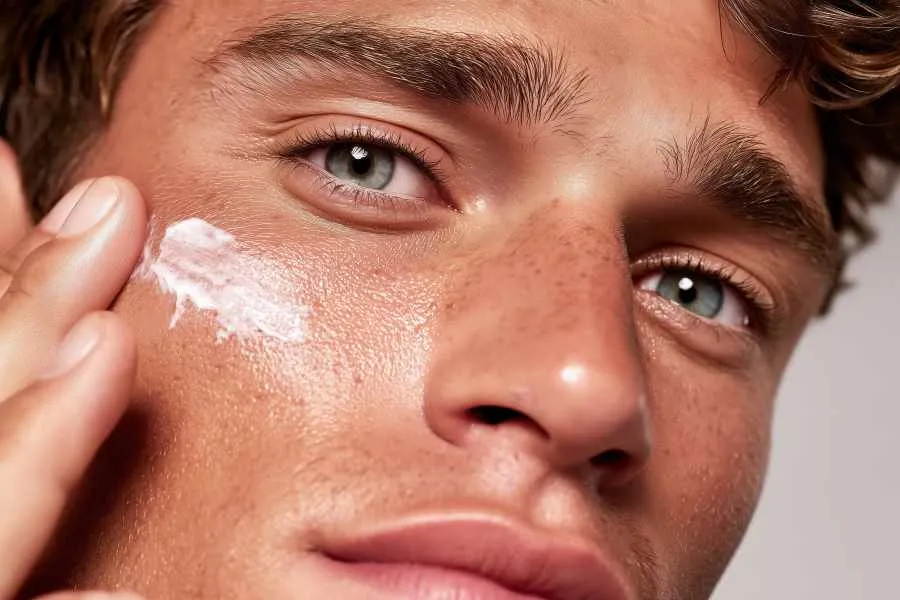 Lactobacillus strains are also common in skin care due to calming and barrier-supporting properties.No one size fits all
Lactobacillus strains are also common in skin care due to calming and barrier-supporting properties.No one size fits all
According to Houdart, there is a targeted approach to formulating with bacterial strains that depends on the skin conditions.
“For example, a probiotic called PNC 48 was tested in a clinical trial and actually reduced melanin and brightened UV-induced dark spots, so that could be an approach for hyperpigmented skin,” she shares.
Lactobacillus strains are also common in skin care because of their calming and barrier-supporting properties.
However, Houdart says most products on the market contain postbiotics such as lysate or fermions rather than probiotics.
“Rather than live bacteria strains, postbiotics that are bioactive compounds like metabolites, peptides, enzymes, or cell wall fragments are not alive but still provide functional benefits. We can target some skin conditions by looking at those different bioactive compounds.”
Probiotics may also have some adverse effects on the skin. While they are usually well tolerated in clinical trials, they are not risk-free, she says.
“Probiotic strains can cause irritation or even an allergic reaction, mostly due to the excipient — inactive substance — used in the formulation.”
Houdart explains that there are a few reports of reactions, mostly from applying probiotic skin care directly to open wounds or immunocompromised people.
“However, most clinical trials do not include those populations, so I think it is essential that any topical probiotic product brought to the market undergo rigorous clinical testing to confirm its safety and that it is suitable for use on sensitive or compromised skin.”



